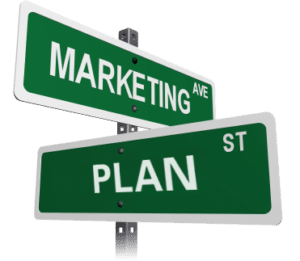Make Making Money The Focus Of Your Exhibit Marketing Plan
An effective exhibit marketing plan will help strategically guide you to increase attendee interaction and maximize ROI for each show. Using the right plan, you’ll identify the types of people you want to connect with, engage them appropriately, impress them memorably, and spread the word about your participation in each show. Let me take you through it, step by step.
This process begins with knowing what you want to achieve, understanding the purpose for exhibiting, and how these relate to your overall marketing strategy.
Most exhibitors participate in shows to accomplish one or more of these objectives:
• making sales
• building relationships with customers
• market research
• building relationships with media outlets (public relations)
• building the brand
• building channels for expansion or future business

In order to succeed, you need to set measurable and realistic objectives for your exhibiting marketing. Ask some questions that will serve as the basis for your exhibit marketing plan:
• Why do I want to exhibit at this show?
• What products/services will I be exhibiting?
• What do I want to accomplish at the show?
• What image of our company do I want to put forward?
• How will I measure the results of participating in this show?
• How will I use the information and data I gather at the show?
To be effective, your objectives need to be SMART:
• Specific
• Measurable
• Achievable
• Realistic
• Time-Limited
With each of those questions you posed for yourself above, you can measure your success against them. Other questions, specific to your company or industry, should be similarly designed.
When you’ve answered these questions, it’s time to begin creating your exhibit marketing plan. You should start this process at least six months in advance of the show. You’ll be sharing this plan with colleagues, so you can delegate responsibilities and coordinate deadlines (the time-limited part). Your written plan should include:
1. Your exhibiting objectives
Do you want to achieve a tangible goal of attracting 100 new customers, or an intangible goal of strengthening partnerships with other businesses that may also be present?
2. Timeframes
Everything has to have a deadline. A goal is just a wish until it has a deadline attached. Plan these well in advance, so you’ll give yourself ample time to succeed.
3. Budgets
Whether you have a lot or a little to spend, you need to know where to allocate it. And you’d be surprised how creative you can get when you need to be thrifty!
4. Space requirements
It’s simple to decide on the size of an exhibit. But then you’ve got to determine what you’re going to put in it. Do you have enough space for your products to be adequately presented? Or will you need to fill up some empty space so it doesn’t look deserted?![]()
5. Exhibit design parameters
What’s the look and feel of your business? How can you capture that in the various materials that make up your exhibit? What are your company’s colors? How big do you want to portray your company? All these questions come into play.
6. Specific messages to be communicated
Your emphasis may change from show to show. Determine what kind of audience will be at each show. Then decide what you need them to know before they’ll buy from you.
7. Products or service to be highlighted
Just as with the messages you put out there, the products or services may also change from one show to another. Be strategic in determining which products to showcase.
8. On-site services needed
From I&D to electrical, and everything in between, they all need to be determined in advance, so your budget doesn’t fall prey to surprises.
9. Transportation and logistics
How will you get your stuff to the show, and what will you do with it once it gets there? Think it through. Logistics applies to your people, as well.
10. Staff selection and training
Another important aspect of your exhibit marketing plan is your people. Your booth staff is the front line, as well as being the first impression your company offers. Make that impression count, and make sure each staffer knows what he or she needs to do at the show, in order to succeed.
11. Promotional activities
Pre-show, at-show and post-show, determine how you’ll make the most of your participation, and ensure your memorability in the minds of your customers and prospects.
12. Data capturing requirements
You can’t follow up without contact information. But that’s only part of the whole. Will you do a survey at the show to find out more about how your company is perceived by your prospects? Maybe you should. Determine what data you want.
13. Show evaluation criteria
You won’t know if you’ve succeeded unless you have something to measure against. These criteria should be determined in advance. Again, make them SMART.
14. Follow-up processes and procedures
Don’t be the guys who go to a show and then do nothing with the contacts you’ve created. Make following up as important as participating in the show.
Drafting and executing a thorough exhibit marketing plan may not be all fun and games. But it’s critical to your success as a 21st century exhibitor. You can’t just show up and show off anymore. Make every interaction count.
Put as much thought into the design and creation of your exhibit as you invest in the development and manufacturing of the products you sell. Whether you’re looking for a portable display or a modular exhibit, we can help. American Image Displays also offers a broad range of accessories that can help you shine light on your product, showcase your literature or provide a pedestal where your staffers can do business. To learn more, call (888) 977-8076 or email [email protected].


